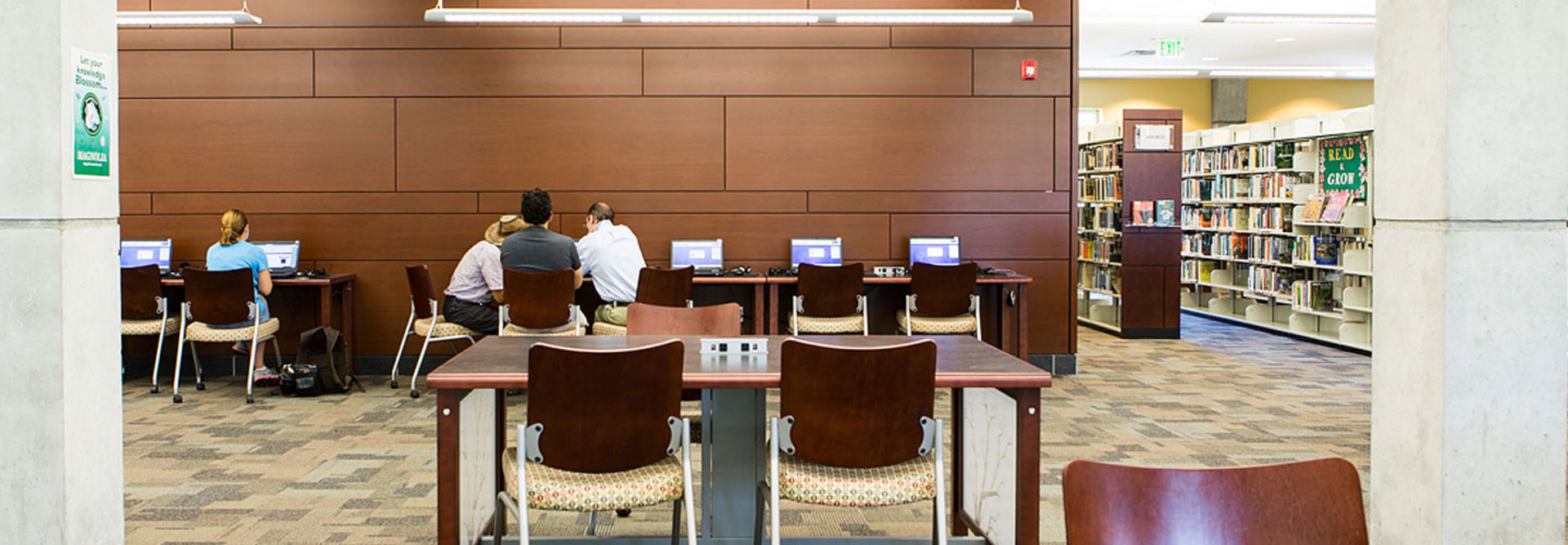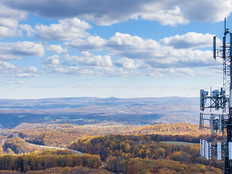How Rural and Suburban Libraries Bridge the Digital Divide
Perched on a knoll overlooking the beach in Gulfport, Miss., the Harrison County Library System's headquarters was the pride of the state. "It had the best view in Mississippi," boasts Library Director Robert Lipscomb.
But that charm came at a price. Hurricane Katrina destroyed the building and three other county libraries. "It was hit by a 30-foot wall of water," says Lipscomb.
Once Internet service was restored, the Harrison County library service helped those in the community learn about available services and federal aid. Officials purchased new computers and rebuilt the four destroyed buildings "Because of technology, we were able to offer information services that we would have never dreamed of," Lipscomb says.
The Harrison County Library System embodies the results of the American Library Association's Digital Inclusion Survey, which found that nearly all of the nation's public libraries provide their communities with computers, Wi-Fi, vast online resources and technology skills training.
The report, however, also found a stark divide among some of the digital resources available at libraries. For instance, 19 percent of rural libraries have Internet speeds of 1.5 megabits per second or slower, while only 2 percent of urban libraries do.
"We as librarians have worked very hard to establish ourselves as digital leaders in our communities, but the needs are increasing," says Courtney Young, president of the American Library Association, which conducted the study with the University of Maryland's Information Policy & Access Center. "We need to continue to do more to connect poor communities — and connect them at the speeds that they need."
While the report looks at national averages, plenty of smaller and rural libraries have bucked the trend and found creative ways to provide state-of-the-art technology and digital services to their patrons.
July 22, 2014
President Obama signs the Workforce Innovation and Opportunity Act, which makes libraries eligible for funds to support job training and job search programs
Granting Wishes
Harrison County was able to get back on its feet, thanks to grant funding. In 1999, the Gates Library Foundation (the precursor to the Bill & Melinda Gates Foundation) helped pay for new computers, and in 2007, another Gates Foundation grant helped rent trailers for temporary locations after the hurricane.
A 2009 Knight Foundation grant enabled the Harrison County Library System to upgrade its network and replace damaged equipment. It purchased 77 notebooks and 10 desktop computers and software. "The computers were vitally important," stresses Lipscomb.
Like most libraries today, Harrison County uses a digital catalog stored in the cloud, so it didn't lose that data in the hurricane. It also has access to the statewide MAGNOLIA system that connects public libraries, schools, community colleges and universities to databases.
"It's incredibly efficient and affordable, because it's done statewide," Lipscomb says. "You can go into a little rural library in the Delta, sit down at the computer and have access to more information than we could have dreamed of, even at the academic library I worked at 40 years ago."
Harrison County libraries purchased fiber-optic connections using E-Rate funding from the FCC, which covers 80 percent of the system's telecommunications costs each year. "That's absolutely vital to libraries around the country, because local budgets have always been tight when it comes to libraries," says Lipscomb.
Changing Expectations
The Midland County Public Library in Texas wasn't just up against a tight budget — the county commissioners were planning to close it entirely due to lack of use. "Fortunately, the citizens rallied," recounts John Trischitti III. "They were up in arms." When asked if they used the library, however, most confessed that they did not.
Swayed by their passion, the commissioners decided to reinvest in the library rather than eliminate it. In 2009, newly hired Director Trischitti set out to redefine the library. "It's not just a depository for books," he says. "The library in a community needs to be a vibrant meeting place — a cornerstone of what's going on in the community, not an afterthought."
Midland County closed a 2,200-square-foot branch in a strip mall and spent $8.3 million in sales tax revenues to convert a 33,000-square-foot building into Centennial Library, which opened in April 2013. Trischitti and his team worked to create a culture that would turn the space into the gathering place they envisioned.
They began with the public-access catalog. Instead of sitting at workstations, Centennial patrons use interactive digital walls to find materials, and a mapping tool helps them locate books in the stacks. Projectors display content on the walkway, and digital billboards provide general information.
Centennial also has early literacy stations for children, gaming stations and a media lab complete with a green screen, soundproof rooms, video cameras and recording studio equipment.
The library's IT infrastructure and resources are all housed in a building with artificial trees, a fireplace and a hot-air balloon. "We didn't want this cutting-edge technology and then this vanilla space," says Trischitti, the 2014 Texas Librarian of the Year. "We really are trying to change the culture, change the mindset."
Connecting the Community
Each night, cars park in the lots of the Delta County, Colo., libraries well past closing time. "Here in rural America, we have a tremendous problem with access," says Delta County Library District IT Manager John Gavan. "People will come from all over to get access to an Internet connection."
Last year, after hearing about the Gigabit Library Network's Super Wi-Fi pilot project, Gavan applied and was selected for the trial. The Delta County Library District went online in October 2013, extending Internet service from the library to the main street in Paonia and the town park. "Now anyone with a mobile device can find our hotspot and access the Internet," he says.
When TV broadcasters shifted from analog to digital service, the FCC made white-space spectrum available as an unlicensed resource. Delta County was one of the first to use Wi-Fi over the white-space spectrum, known as Super Wi-Fi. The WhiteSpace Pilot is now being expanded to libraries around the nation and to other countries. "The word is just getting out about how well it works," says Gavan.
Delta County's Super Wi-Fi technology can stretch for 10 miles, penetrate tree canopies and refract around hills and buildings to some degree. Because of the heavy foliage in Paonia, the library district never would have been able to extend regular Wi-Fi service, says Gavan.
At the end of the pilot, the district purchased a radio base station and two client radios coupled to a pair of Cisco Meraki access points for $6,000. Gavan raised $4,141 of that through a month-long Kickstarter campaign.
"It's been so successful," Gavan says, adding that the library plans to deploy Super Wi-Fi to other towns if he can secure the funds. "The usage has just been going up and up and up."








